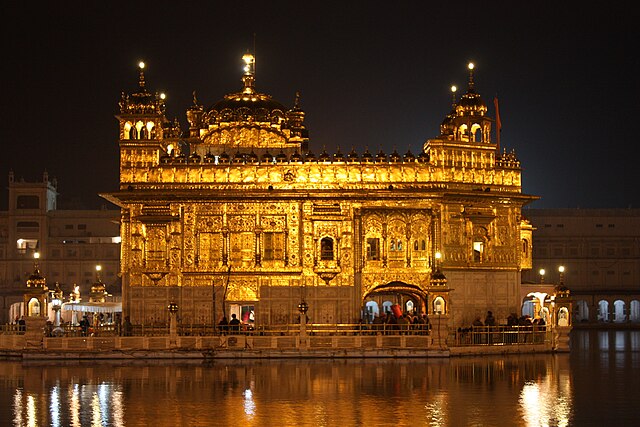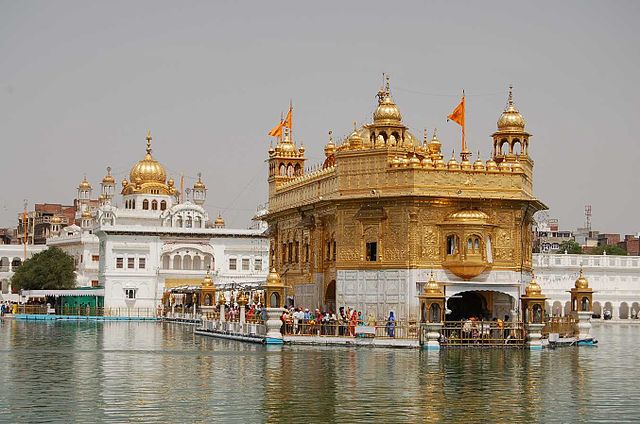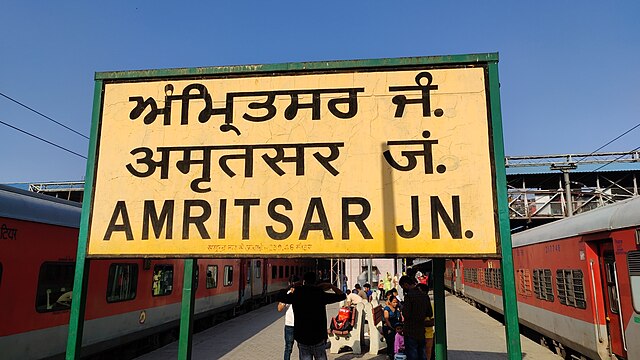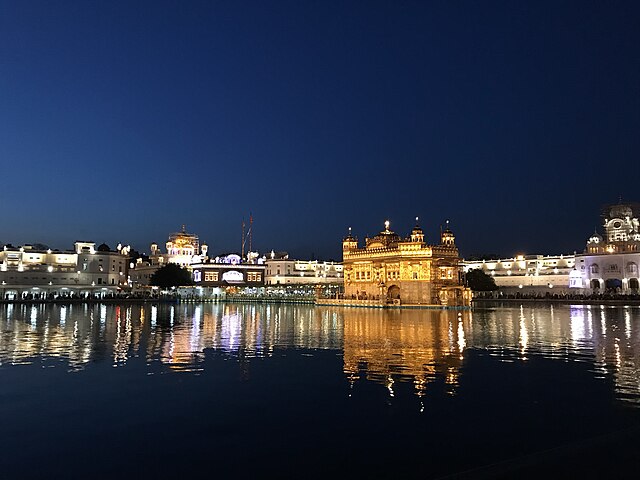Have you ever wondered what it feels like to step into a city where spirituality meets history, where every corner tells a story, and where the aroma of delicious food fills the air? Welcome to Amritsar – Punjab’s crown jewel that’s been captivating visitors for centuries. This isn’t just another travel destination; it’s an experience that touches your soul and leaves you forever changed.
Nestled in the heart of Punjab, Amritsar stands as a testament to India’s rich cultural heritage and spiritual depth. From the moment you set foot in this golden city, you’ll understand why millions of pilgrims and tourists flock here every year. But what exactly makes Amritsar so special? Let’s dive deep into this enchanting city and discover its many treasures.
What Makes Amritsar Special?
The City of Golden Temple
When people think of Amritsar, the first image that comes to mind is the breathtaking Golden Temple, or Harmandir Sahib as it’s officially known. This isn’t just a building; it’s the spiritual heart of Sikhism and one of the most visited religious sites in the world. But Amritsar is so much more than just its famous temple.
The city serves as a living museum where ancient traditions blend seamlessly with modern life. Walking through its bustling streets, you’ll witness a tapestry of cultures, religions, and communities living in harmony. It’s like watching history unfold before your eyes, where every stone has a story to tell.
A Melting Pot of Culture and History
Amritsar has been a crossroads of civilizations for centuries. Founded in 1577 by Guru Ram Das, the fourth Sikh Guru, the city has witnessed the rise and fall of empires, the birth of movements, and the celebration of countless festivals. Today, it stands as a symbol of resilience, faith, and unity.
The city’s strategic location near the Pakistan border has shaped its character significantly. This proximity has influenced everything from its cuisine to its culture, creating a unique blend that you won’t find anywhere else in India. It’s this distinctive character that makes Amritsar feel like a world unto itself.
The Magnificent Golden Temple: Crown Jewel of Amritsar

Let’s be honest – no visit to Amritsar is complete without experiencing the Golden Temple. But calling it just a “visit” would be an understatement. It’s more like a spiritual journey that begins the moment you catch your first glimpse of its golden dome reflecting in the sacred waters.
Architecture That Takes Your Breath Away
The Golden Temple isn’t called “golden” for nothing. Its upper floors are covered with real gold, creating a spectacle that’s especially mesmerizing during sunrise and sunset. The temple’s architecture is a beautiful blend of Hindu and Islamic styles, symbolizing the inclusive nature of Sikhism.
But here’s what truly sets it apart – the temple has four entrances, one on each side, welcoming people from all directions and backgrounds. This design philosophy perfectly embodies the Sikh principle of universal brotherhood. As you walk through the marble causeway leading to the temple, you’ll feel a sense of peace that’s hard to describe in words.
The Sacred Sarovar (Holy Pool)
Surrounding the Golden Temple is the Amrit Sarovar, the pool of nectar that gives the city its name. This isn’t just any water body; it’s considered sacred by millions of Sikhs worldwide. The sight of devotees taking a holy dip in its waters, regardless of the weather, is both humbling and inspiring.
Spiritual Significance of the Holy Waters
According to Sikh tradition, the waters of the Amrit Sarovar have healing properties. While science might debate this claim, what’s undeniable is the spiritual healing that visitors experience here. Many people describe feeling a profound sense of calm and clarity after spending time by these waters.
The pool’s maintenance is a community effort, with volunteers working around the clock to keep it clean. This collective responsibility reflects the Sikh values of seva (selfless service) and community participation that are central to the religion.
Jallianwala Bagh: Where History Speaks
Just a stone’s throw from the Golden Temple lies Jallianwala Bagh, a place where history took a tragic turn that changed the course of India’s freedom struggle. This public garden serves as a poignant reminder of the sacrifices made during the independence movement.
The Tragic Tale of 1919
On April 13, 1919, British forces opened fire on a peaceful gathering of Indians who had assembled to protest the Rowlatt Act. The massacre claimed hundreds of lives and left thousands wounded. The bullet marks on the walls and the martyrs’ well where people jumped to escape the firing still bear witness to that dark day.
Walking through Jallianwala Bagh today, you can almost hear the echoes of that fateful day. It’s a sobering experience that helps visitors understand the price of freedom and the importance of remembering our history.
Memorial and Museum
The memorial at Jallianwala Bagh isn’t just a monument; it’s a learning center that educates visitors about the freedom struggle. The museum houses artifacts, photographs, and documents that tell the story of the massacre and its aftermath. It’s an essential stop for anyone wanting to understand India’s journey to independence.
Wagah Border: Where Patriotism Comes Alive
About 30 kilometers from Amritsar lies the Wagah Border, the only road border crossing between India and Pakistan. But this isn’t just any border; it’s where one of the world’s most unique ceremonies takes place every evening.
The Famous Beating Retreat Ceremony
Every day at sunset, the Indian and Pakistani border guards perform an elaborate ceremony that’s part military drill, part theatrical performance. The synchronized marching, the lowering of flags, and the crowd’s enthusiastic cheers create an atmosphere that’s electric with patriotic fervor.
Watching this ceremony is like witnessing a carefully choreographed dance between two nations. Despite the political tensions that often exist between India and Pakistan, this ceremony represents a shared cultural heritage and mutual respect between the border guards.
Best Time to Visit Wagah Border
The ceremony happens every day, but the experience varies with the season. During winter months, the weather is pleasant, and the crowds are manageable. However, if you want to feel the full intensity of the experience, visit during a national holiday when the patriotic spirit runs especially high.
Make sure to reach at least an hour before the ceremony begins to get a good seat. The energy builds up gradually, and being part of that crescendo is what makes the Wagah Border experience so memorable.
Culinary Paradise: Amritsar’s Food Scene
If you’re a food lover, Amritsar will feel like paradise. The city’s culinary scene is a delicious reflection of its cultural diversity and agricultural abundance. From street food that costs pennies to elaborate traditional meals, Amritsar offers flavors that will haunt your taste buds long after you leave.
Street Food That’ll Make You Drool
Amritsar’s streets are lined with food vendors selling everything from spicy chaat to sweet treats. The city’s street food culture is so vibrant that many visitors plan their entire itinerary around meal times. But among all the options, a few dishes stand out as absolute must-tries.
Kulcha and Lassi: The Perfect Combo
Amritsari kulcha isn’t just bread; it’s an art form. These stuffed flatbreads, typically filled with potatoes, onions, or paneer, are cooked in traditional tandoor ovens and served with dollops of butter and yogurt. Pair it with a tall glass of sweet lassi, and you’ve got a meal that’s both filling and satisfying.
The best kulcha joints in Amritsar have been family-run for generations, with recipes passed down through the years. Each place has its own secret techniques, making kulcha-hopping a delicious adventure in itself.
Amritsari Fish: A Delicacy You Can’t Miss
Who says Punjab doesn’t have great seafood? Amritsari fish, with its crispy golden coating and tender inside, proves that landlocked doesn’t mean lacking in flavor. The fish is marinated in a blend of spices and gram flour, then deep-fried to perfection.
What makes this dish special is the unique spice blend that’s specific to Amritsar. The recipe has been perfected over decades, and each bite delivers a burst of flavors that dance on your palate.
Traditional Punjabi Cuisine
Beyond street food, Amritsar offers authentic Punjabi cuisine that’s hearty, flavorful, and deeply satisfying. The traditional thali (platter) includes dal makhani, butter chicken, naan, rice, and an array of vegetables that showcase the region’s agricultural bounty.
The city’s restaurants and dhabas (roadside eateries) serve food that’s cooked with love and generosity. Portions are generous, flavors are bold, and hospitality is warm. It’s not just a meal; it’s an experience that embodies the Punjabi spirit of abundance and celebration.
Shopping in Amritsar: Treasures Await

Shopping in Amritsar is like treasure hunting. The city’s markets are filled with everything from traditional handicrafts to modern goods, all offered at prices that’ll make you want to buy everything in sight.
Hall Bazaar and Katra Jaimal Singh
Hall Bazaar is Amritsar’s main shopping street, where you can find everything from clothing to electronics. But the real charm lies in the smaller lanes like Katra Jaimal Singh, where traditional shops sell items that have been part of Punjabi culture for centuries.
These markets aren’t just shopping destinations; they’re cultural experiences. The shopkeepers are storytellers who can tell you the history behind their products. Bargaining is expected and enjoyed, making every purchase an interactive experience.
Traditional Handicrafts and Textiles
Amritsar is famous for its textiles, particularly the hand-woven fabrics and embroidered items. The city’s artisans create beautiful phulkari work, a traditional embroidery style that’s both intricate and vibrant. These pieces aren’t just clothing; they’re wearable art that carries the essence of Punjabi culture.
The city also offers traditional juttis (footwear), wooden toys, and metal handicrafts that make perfect souvenirs. Each item tells a story of the artisan’s skill and the region’s rich craft traditions.
Best Time to Visit Amritsar
Timing can make or break your Amritsar experience. The city’s continental climate means it experiences extreme temperatures, so choosing the right season is crucial for a comfortable visit.
Weather Considerations
The best time to visit Amritsar is from October to March when the weather is pleasant and conducive to sightseeing. During these months, temperatures range from 5°C to 25°C, making it comfortable for walking around the city and exploring its attractions.
Summers (April to June) can be extremely hot, with temperatures soaring above 45°C. While the city doesn’t shut down during summer, the heat can be overwhelming for visitors not accustomed to such temperatures. Monsoons (July to September) bring relief from the heat but can also bring heavy rains that might disrupt travel plans.
Festival Season Magic
If you want to experience Amritsar at its most vibrant, plan your visit during festival season. Diwali, Dussehra, and Guru Nanak Jayanti are celebrated with great enthusiasm, and the Golden Temple is beautifully illuminated during these times.
The festival season also brings special food offerings and cultural programs that give visitors a deeper insight into local traditions. However, these periods also see higher crowds and prices, so plan accordingly.
Getting Around Amritsar
Navigating Amritsar is easier than you might expect. The city is well-connected internally, and most major attractions are within reasonable distance of each other.
Transportation Options

Auto-rickshaws are the most popular mode of transport for short distances within the city. They’re affordable, readily available, and drivers usually know all the major attractions. For longer distances or day trips to places like Wagah Border, hiring a taxi or cab is more comfortable.
The city also has a decent bus network, though it might be challenging for first-time visitors to navigate. Cycle-rickshaws are available for very short distances and offer a more leisurely way to explore the narrow lanes around the Golden Temple.
Local Tips for Travelers
Here’s something most guidebooks won’t tell you – the best way to experience Amritsar is on foot. The area around the Golden Temple is pedestrian-friendly, and walking allows you to soak in the atmosphere, interact with locals, and discover hidden gems that you might miss in a vehicle.
Always carry some cash, as many local vendors and small shops don’t accept cards. Also, learn a few basic Punjabi phrases – locals appreciate the effort and are more likely to share insider tips about the best places to eat and shop.
Where to Stay in Amritsar
Amritsar offers accommodation options for every budget and preference. From luxury hotels to budget hostels, you’ll find something that suits your needs and wallet.
Budget-Friendly Options
For budget travelers, there are several guesthouses and budget hotels near the Golden Temple that offer clean, basic accommodation at affordable prices. Many of these places also provide free meals or tea, adding value to your stay.
Hostels are becoming increasingly popular among younger travelers and backpackers. They offer dormitory-style accommodation and are great places to meet fellow travelers and share experiences.
Luxury Accommodations
If you prefer luxury, Amritsar has several high-end hotels that offer world-class amenities and services. These hotels often provide cultural programs, spa services, and fine dining options that enhance your overall experience.
Many luxury hotels also offer guided tours and can arrange transportation to various attractions, making your stay more convenient and comfortable.
Conclusion
Amritsar isn’t just a destination; it’s an emotion, a journey, and a revelation all rolled into one. This golden city offers something for everyone – spiritual seekers find peace at the Golden Temple, history buffs discover stories at Jallianwala Bagh, patriots feel pride at Wagah Border, food lovers indulge in culinary delights, and shoppers find treasures in bustling markets.
What makes Amritsar truly special is its ability to touch your heart while feeding your soul. It’s a place where you’ll find yourself slowing down, breathing deeper, and appreciating the simple yet profound aspects of life. Whether you’re seeking spiritual enlightenment, historical insights, culinary adventures, or simply a break from routine, Amritsar delivers an experience that’s both transformative and unforgettable.
The city’s warmth doesn’t just come from its weather; it comes from its people, their hospitality, and their genuine desire to share their culture with visitors. In Amritsar, you’re not just a tourist; you’re a guest, and that makes all the difference.
Frequently Asked Questions
Q1: How many days do I need to explore Amritsar properly?
A: While you can see the main attractions in 2-3 days, spending 4-5 days allows you to explore the city at a leisurely pace, enjoy the food scene, do some shopping, and truly soak in the culture. This also gives you time for day trips to nearby attractions like Wagah Border.
Q2: Is it safe for solo female travelers to visit Amritsar?
A: Yes, Amritsar is generally safe for solo female travelers. The city has a strong sense of community, and locals are helpful and protective of visitors. However, like any travel destination, it’s important to stay aware of your surroundings and follow basic safety precautions.
Q3: What should I wear when visiting the Golden Temple?
A: Visitors must cover their heads, remove shoes, and dress modestly when entering the Golden Temple complex. Avoid wearing shorts, short skirts, or sleeveless tops. Head coverings are available at the temple if you don’t have one.
Q4: Can I visit Amritsar during monsoon season?
A: While you can visit during monsoons (July-September), be prepared for heavy rains and humid conditions. The upside is that the city looks lush and green, and you’ll encounter fewer crowds. Just pack appropriate rain gear and waterproof bags for your belongings.
Q5: What are some unique experiences I shouldn’t miss in Amritsar?
A: Don’t miss the early morning prayers at Golden Temple, the community kitchen (langar) experience, a food walk through the old city, shopping in Hall Bazaar, and the sunset ceremony at Wagah Border. These experiences offer deep insights into local culture and traditions.

